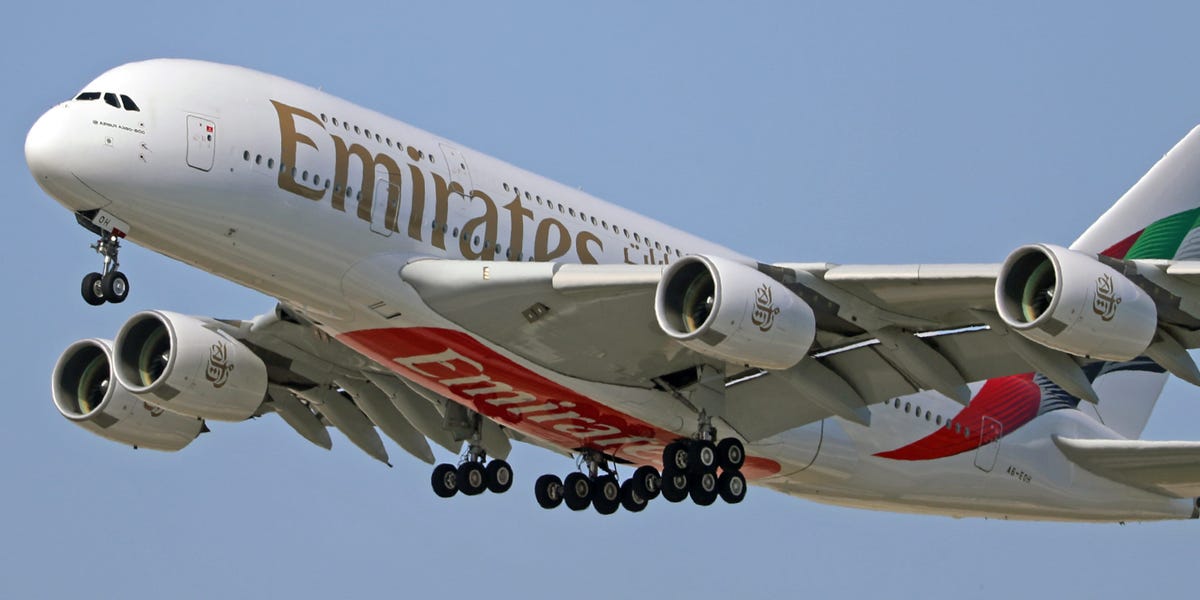Could a Revamped A380 Win Back Airlines? Insights from Emirates’ CEO
In a world where the aviation industry is undergoing rapid changes, the iconic Airbus A380 has found itself at a crossroads. Emirates CEO Tim Clark recently expressed optimism regarding the potential for a major overhaul of the A380, suggesting that a revamped version of this superjumbo could reignite interest among airlines. As the landscape of air travel continues to evolve, it begs the question: could the Airbus A380 make a triumphant return to the skies?
The Legacy of the A380
Launched in 2005, the Airbus A380 quickly became a symbol of modern aviation. With its double-decker design and capacity for over 500 passengers, it was hailed as a marvel of engineering. Airlines like Emirates embraced the A380, utilizing it on long-haul routes and revolutionizing the passenger experience with spacious seating and luxurious amenities. However, as the aviation industry shifted towards more fuel-efficient, smaller aircraft, the A380’s popularity waned. Airlines began to retire their fleets, and the A380 was often viewed as a relic of a bygone era.
Tim Clark’s Vision for a Revamped A380
Tim Clark, who has been a long-time advocate for the A380, believes that a significant redesign could breathe new life into the aircraft. He envisions an A380 equipped with modern technology, improved fuel efficiency, and enhanced passenger comfort. According to Clark, a revamped A380 could cater to the evolving demands of airlines and passengers alike, particularly in the post-pandemic travel landscape.
One of the key factors in Clark’s vision is sustainability. Airlines are increasingly seeking to reduce their carbon footprint, and a redesigned A380 could incorporate more eco-friendly materials and systems. This aligns with the industry’s overarching goal of achieving net-zero emissions by 2050. By integrating sustainable practices, the A380 could become a more appealing option for airlines looking to meet environmental standards.
The Potential Market for a Revamped A380
As airlines recover from the impact of the COVID-19 pandemic, there is a renewed focus on capacity and operational efficiency. While many airlines have turned to smaller, more fuel-efficient aircraft for short to medium-haul flights, there remains a significant market for long-haul travel. The A380, with its high passenger capacity, could serve as a strategic asset for airlines looking to maximize revenue on popular international routes.
- High-Demand Routes: The A380 is particularly well-suited for busy international hubs, where demand for seats often exceeds supply.
- Luxury Travel: As premium travel begins to recover, airlines may seek to attract high-value customers with spacious and comfortable seating options.
- Tourism Growth: As tourism rebounds, airlines will need to accommodate increased passenger numbers, making larger aircraft like the A380 appealing.
Challenges in Reviving the A380
Despite the potential benefits of a revamped A380, there are significant challenges that must be addressed. The aviation industry is highly competitive, and airlines must make strategic decisions based on their fleets, routes, and financial constraints. Some of the key challenges include:
- Cost of Overhaul: A major redesign of the A380 would require a substantial investment. Airlines must weigh the costs against potential returns.
- Market Demand: While there is potential for a resurgence in demand for larger aircraft, airlines must conduct thorough market analysis to ensure a sufficient return on investment.
- Technological Advancements: The aviation sector is rapidly evolving, with advancements in smaller aircraft technology and sustainable aviation fuel. A revamped A380 would need to compete with these innovations.
Lessons from the Pandemic
The COVID-19 pandemic has fundamentally changed the aviation landscape. Airlines have had to adapt to new health and safety regulations, fluctuating passenger demand, and a growing emphasis on sustainability. The pandemic has also accelerated trends such as remote work, which may impact long-term travel patterns.
As airlines look to the future, they must consider how a revamped A380 could fit into this new reality. The focus on health and safety has increased the importance of passenger experience, and a redesigned A380 could provide a unique selling point in a competitive market.
Conclusion: A Bright Future for the A380?
Tim Clark’s insights into the potential for a revamped A380 are both optimistic and realistic. While there are obstacles to overcome, the possibility of reintroducing a modernized A380 could resonate with airlines looking to enhance their fleets. The combination of passenger demand for space and comfort, along with the need for sustainability, creates a unique opportunity.
As the aviation industry continues to evolve, the Airbus A380 could once again take center stage, provided that its revival aligns with the changing needs of airlines and travelers. The path forward requires collaboration between manufacturers, airlines, and regulatory bodies to ensure that a revamped A380 not only meets modern standards but also offers an unparalleled travel experience.
In the end, the question remains: could a revamped A380 win back airlines? With visionaries like Tim Clark at the helm, it seems that the potential for a renaissance of this iconic aircraft is not entirely out of reach.
See more Business Focus Insider Team

